Keywords
Neuroscience; Brain-mind interrelation; Quantum brain dynamics
Introduction
The cerebral cortex is, without doubt, the most complex structure formed during evolution. It represents the fundamental physical substrate from whose activity human memory and conscious emerge. The connection of brain and mind has been a topic of intense discussions and speculations in science during last century, at least since humanity became aware that the brain was the source of our behavior. The typical philosopher’s approach to mental-neural puzzle is that due to “category error” the methods of science cannot account for conscious experience because they are “simply the wrong sport of methods”.
The great neuroscientist Damasio in 1999 said: “As the millennium draws to close, it is apparent that one question towers above all others in the life sciences is arising: how does the set of processes we call mind emerge from the activity of the organ we call brain?” [1].
Recent advancements in the brain sciences have enabled researchers to determine locations and patterns of neural activation associated with various psychological functions. In this context, it is known that cognitive and executive processes are located mainly in frontal region, memory in hippocampus, neocortex and amygdala, the language is related with two region- Broca (associated with speech production and articulation) and Wernicke's area (associated with comprehension), visual perception is dependent on occipital region etc.
Brain refers to the neurons, cells, and chemicals that govern activities of the whole organism. Mind is often considered as consciously aware perceptions and thoughts. Still, mind could be also divided in conscious and unconscious processes that act as an intermediate stage between the organism’s biology and its behaviour, or a translation from one to the other. The answer on the question for relationship between the brain and mind connect many disciplines like neuroscience and psychology, but also physics, mathematics, and philosophy, as well. In this context two great scientists Popper and Eccles, in 1977 wrote the book “The self and it’s brain” with the attempts in interdisciplinary cooperation of neuroscience and philosophy [2]. The result was the underlying the interactive mind/matter duality as a ground from which both matter and mind are formed in a potential reality, a flux.
Information flow diagram for mind-brain interaction can be presented in the Figure 1.
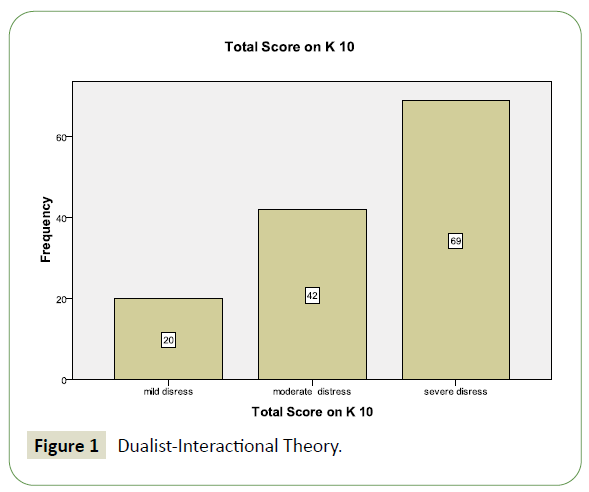
Figure 1: Dualist-Interactional Theory.
The world 1 comprises physical objects and events, including biological entities; world 2 comprises individual mental processes, while the world 3 comprises abstractions that emerge from and have an effect back on world 2 through their representations in World 1.
The inverse question is also arising: how a non-material mental event (of the World 2) such as an intention to move, could influence the subtle probabilistic operations of synaptic buttons (of the World 1)? Briefly, mental events influence at least some physical outcomes within the range allowed by quantum mechanics. Eccles supposed that the options of a single vesicle discharging or not discharging both have non-zero quantum probabilities, so that such neural events are genuinely underdetermined by quantum mechanics, and the way is open for them to be determined by the mind. On the biological side, attention is focused on the procrystalline presynaptic vesicular grids as the targets for non-material mental events. On the physical side, attention is focused on the probabilistic field of quantum mechanisms which carry neither mass nor energy, but which nevertheless can exert effective action at microsites [3].
The two major theories of how the brain generates the mind are related to the neuronal connections, where electrical signals travel along axons triggering a chemical connection at another neuron’s dendrite and electrical brain waves, which oscillate together at specific frequencies. Both of these mechanisms occur simultaneously, so, perhaps they are complementary and perform different functions. Another theory of mind is that it consists of information, possibly in the form of electromagnetic energy, which would encompass all forms of electricity in the brain [4,5].
Current methods in neuroscience could measure electricity in the brain utilizing scalp electrodes which results in electroencephalogram (EEG), as well as measuring magnetic field which is called the magnetoencephalogram (MEG). However, the mind-brain puzzle is complex and not yet elucidate even with the most sophisticated neuroimaging methods, like functional magnetic resonance (fMRI), signal photon emission computed tomography (SPECT), blood oxygenation level dependent (BOLD), low resolution brain electromagnetic tomography (LORETTA) etc.
Some fundamental and practical aspects in brain-mind puzzle are considered through the study of arousal and attention. This paper proposes a theoretical approach to explain the characteristic empirical interdependence between the states of arousal (representing the level of consciousness) and EEG activity.
Definition of Arousal
Arousal can be defined as a “general activation of mind” [6] or “general operation of consciousness” [7] and can be considered as a starting point of fundamental research on consciousness. Similar role could be assigned to attention, which can be defined by substituting the attribution “general” with “focused”. Considering the practical applications, the empirically established correlation between neuronal oscillations and arousal/attention levels is widely used in research and clinics, including neurofeedback, brain-computer communication etc.
Empirical correlation of mental states with EEG activity
It is well established empirical facts that the level of mental arousal is correlated to the frequency of EEG activity. The typical dependence is represented by the standard classification presented in Table 1. As can be seen from the Table 1, the general dependence exhibits an increase of mental arousal with predominant brain waves frequency. In clinical practice we can distinguish slow waves dominance as a state of under arousal (seen in depression, autism, etc.); fast waves dominance as overarousal (during caffeine use, anxiety, alcoholism, etc.) and “mixed” states, where slow or fast waves are present together (in ADHD, OCD, some forms of headache, etc.) which impose to differentiate some subgroups (clusters).
| Brain waves |
Frequency (Hz) |
States |
| Gamma |
(35Hz+) |
Association with peak performance |
| High Beta |
(22-35 Hz) |
High correlation with anxiety |
| Mid Beta |
(15-20 Hz) |
Active, external attention |
| SMR |
(12-15 Hz) |
Relaxed state, body stillness |
| Alpha |
(8-12 Hz) |
Relaxed, passive attention |
| Theta |
(4-7 Hz) |
Very relaxed, inwardly focused |
| Delta |
(0.5-3 Hz) |
Sleep, deep mediation |
Table 1: Classification of the EEG activity and mental states (Bendorfer, 2001).
From “how” to “why” questions
From this correlation between brain waves and arousal some basic questions arise: Why is the arousal correlated with EEG frequency? Why in this pattern? Why in this frequency interval? Why alpha band corresponds to “relaxed” state?
There are many hypotheses of this correlation. Eccles explain this correlation through microsite probabilities fields of quantum mechanics; Penrose/Hameroff [8-11] explain with protein assembles in microtubules, or Romijn by virtual photons [12]. However, the application of quantum theory as relevant for the microscopic level of neuronal functioning and mental processes looks us quite reasonable.
It is known that water comprises 70% of the brain, and quantum brain dynamics (QBD) proposes that the electric dipoles of the water molecules constitute a quantum field, referred to as the cortical field, with corticons as the quanta of the field. This cortical field is postulated to interact with quantum coherent waves generated by the biomolecules in neurons, which are suggested to propagate along the neuronal network. Using the Quantum Field Theory, it was assumed that brain activity could be reduced to interaction between the water rotational field and the quantized electromagnetic field, thus forming the Quantum Brain Dynamics System (QBD) [13].
Memory is associated with the domain structure of ground state, with electric dipole moments of all molecules synchronously aligned in the same direction.
The proponents of QBD differ somewhat as to the way in which consciousness arises in this system. Jibu and Yasue suggest that the interaction between the energy quanta (corticons) of the quantum field and the biomolecular waves of the neuronal network produces consciousness. However, another theorist, Giuseppe Vitiello, proposes that the quantum states produce two poles, a subjective representation of the external world and also the internal self [14].
However, in all theoretical approaches there is common scheme where the synaptic activity changes electromagnetic fields and results in mental activity. Common elements in all hypotheses are the existence of electric field and dipole molecules on ‘nano’ level. Still, all solutions in mentioned hypothesis are conceptual, lacking analytical expressions and numerical results.
Our Hypothesis
Starting point of all mentioned hypotheses is that the electric field and cortical dipoles are crucial elements of neural-mental correlation. Based on this, we hypothesize: (a) The explanation of the fundamental (substrate) relevance of EEG spectrum for both arousal and attention could be reached on the fielddipole interaction and the resulting transition probabilities. (b) As a focused operation of consciousness (FOC) attention could be considered as a bridge between general operation of consciousness (GOC) and its content (COC).
In this approach, we apply the quantum mechanical formalism to physical microscopic processes, so we are dealing with the quantum theory of matter, not of mind.
The transitions between the states of dipole water molecules as quantum rotators interacting with the time- dependent electric field have been studied by our group, both analytically and numerically [15-20]. By solving a non-stationary Schrödinger equation for a system of N quantum dipoles in an oscillatory electric field of frequency w, an expression for the probability of collective transitions has been derived:

(N = 1012 dipole molecules per neuron and S = Smax for f = fe)
Considering the quantum wave function as an information field, and Pab to be the probability of mental-neural information transfer corresponding to arousal (A), we can calculate the entropy variation as a function of Pab =A, as well as of the electric field frequency f. Consequently, mental arousal (alertness) is the result of readiness to change the state. If we use empirical classification of EEG activity shown in Table 1, we can present graphically how the mental state changes relate to EEG frequencies, or A=A (f) (Figure 2).
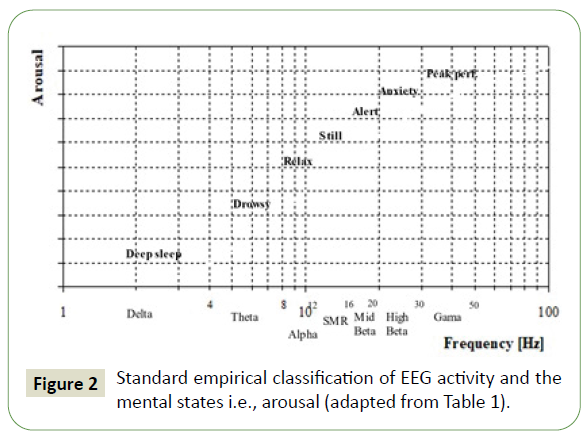
Figure 2: Standard empirical classification of EEG activity and the mental states i.e., arousal (adapted from Table 1).
Using theoretical formula for dependence between arousal and frequencies on EEG we obtained two curves where the alpha band correspond to the optimal relaxed mental state. For adults it is 10 Hz, and for children- 6 Hz related to the maturation of the brain (Figure 3).
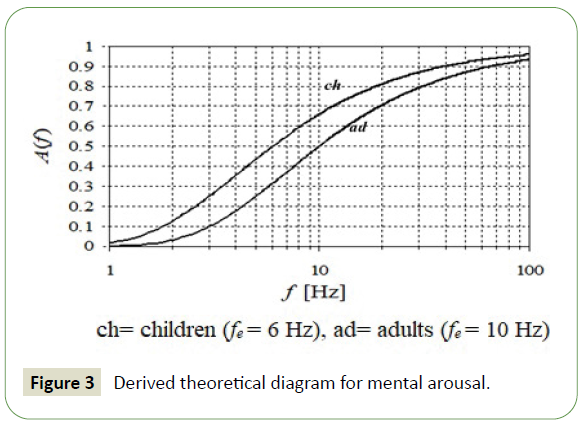
Figure 3: Derived theoretical diagram for mental arousal.
The parameter characterizing the state and the changes (shifts) of any system with spectral properties is the spectrum gravity (Xc, T, σr, …) which comprises weighted contributions of all spectral components (bands). So e.g., the state transition (solid ↔ liquid ↔ gas) depends on the integral parameter T, the stability of a boat – on the center of gravity Xc, the criticality of a reactor cell - on the mean reaction rate, etc. The same parameter is applicable for EEG frequencies.
Brain-rate formula
We agree that by definition arousal is a general, integral characteristic of mental state. Simultaneously, it is correlated with the integral EEG spectrum. The main characteristic of such a spectrum is its weighted mean frequency (gravity). We named it brain-rate (fb).
Using previous statement for gravity as a main characteristic of spectra, we introduced the formula for calculation the mean frequency of all EEG spectrums. This calculated mean frequency integrates all frequency bands and can be calculated in any place of 10/20 EEG system [20,21]. Calculation of brain-rate is following

The brain-rate fb may indicate the states of under arousal and overarousal, and differentiate the levels of activation of corresponding systems. So, using brain-rate we can know the level of consciousness/arousal of the brain as a general characteristic [22,23]. We put this formula at MATLAB and many researchers used it.
Some clinical results
The use of this parameter is relatively easy and can be applied in different field. Firstly, we calculated brain-rate in different location on the scalp in healthy adult people in eye closed condition (Figure 4). The maximum is obtained in P4 (9.82) and the minimum in F8 (8.13) which seem us very logical.
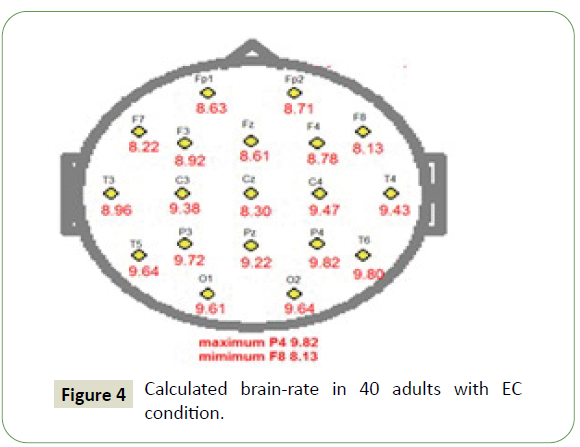
Figure 4: Calculated brain-rate in 40 adults with EC condition.
Brain rate is good parameter for differentiate brain activity in ADHD people and control. In people with ADHD in all regions (frontal, central and posterior) brain rate shows smaller activation (Figure 5).
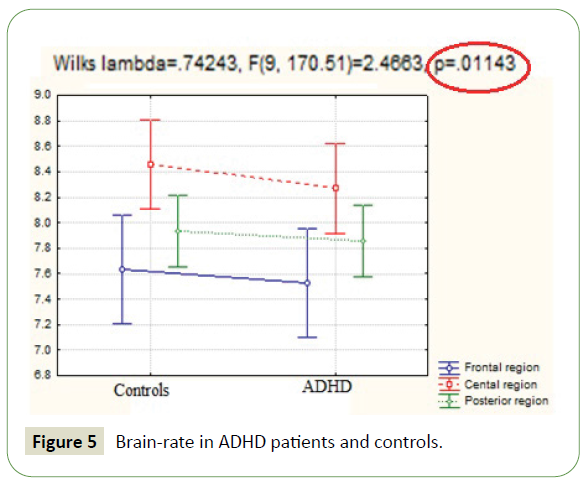
Figure 5: Brain-rate in ADHD patients and controls.
The brain-rate is very specific in normal population compared with ADD, anxious patients or patients with brain injuries or autism (Table 2). The TBI (traumatic brain injuries) and autistic patients showed significantly lower results, and they differ eyes open or closed conditions.
| Parameters |
EC |
EO |
| Normal adults |
8.56 |
10.54 |
| Adults with ADD |
7.60 |
7.86 |
| Anxious patients |
10.85 |
9.73 |
| TBI |
4.81 |
6.87 |
| Autism |
5.80 |
5.65 |
Table 2: Brain-rate in patients with TBI and autism.
The Figure 6 shows brain waves in epileptic patients without therapy and with two antiepileptic drugs. It is clear that slow activity is specific in all patients. Calculated brain-rate for all epileptic patients is shown in Table 3.
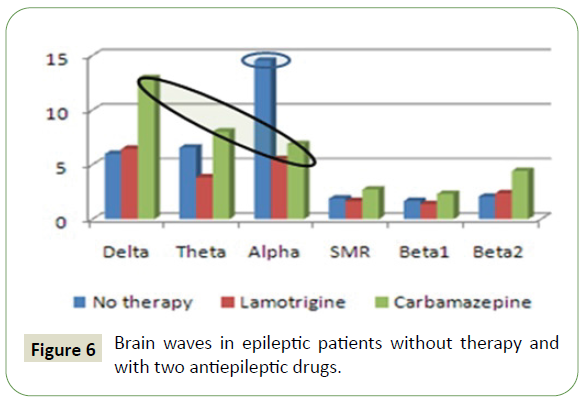
Figure 6: Brain waves in epileptic patients without therapy and with two antiepileptic drugs.
| No therapy |
Lamotrigine |
Carbamazepine |
| 9.53 |
9.95 |
9.51 |
Table 3: Brain-rate in epileptic patients.
It is clear that brain-rate is not so different in dependence to therapy, which means practically there is no difference in the brain activity in all epileptic patients, with or without antiepileptic therapy. Our colleagues from Vienna Technical Institute showed that brain rate is very good indicator for the differentiation of sleep stages, much better that heart rate. The two parameters are opposite. Brain rate go down during the sleep (arousal diminished), and heart rate go up [23] (Table 4).
| Sleep stages |
fb=fw from EEG (Hz) |
fhv=fw from HRV (Hz) |
| Awake |
6.85 |
0.076 |
| REM |
5.34 |
0.076 |
| S1 |
- |
- |
| S2 |
4.18 |
0.116 |
| S3 |
2.72 |
0.128 |
| S4 |
2.45 |
0.132 |
Table 4: Spectrum weighted frequencies from EEG (brain-rate) and from HRV for different sleep stages (Kaniusas et al. 2007).
Brain-rate is very useful for the evaluation of results obtained with neuro feedback training in ADHD children (Table 5). As is shown, brain-rate is more exact parameter compared to the theta/beta ratio.
| Parameters |
Before NF (µV) |
After NF (µV) |
T-test |
Significance |
| Beta brain waves |
4.86 ± 1.6 |
8.0 ± 1.38 |
5.23 |
P<0.01 |
| Theta brain waves |
20.95 ± 1.38 |
15.29 ± 1.38 |
8.47 |
P<0.01 |
| Theta/Beta |
4.7 ± 1.38 |
2.0 ± 1.6 |
4.5 |
P<0.01 |
| Brain-rate |
7.86 ± 0.56 |
8.22 ± 0.63 |
6.6 |
P<0.01 |
Table 5: Brain-rate before and after neurofeedback training for ADHD children.
If we summarize, there is clear correlation between thalamic activity, EEG frequencies, neuromodulators, quantum probabilities and mental state (Figure 7). However, deeper understanding of substrates and emergence of arousal, attention and consciousness must take into account the subtle interplay of neurophysical, neurochemical and neurobiological correlates. Further research, theoretical and experimental is needed.
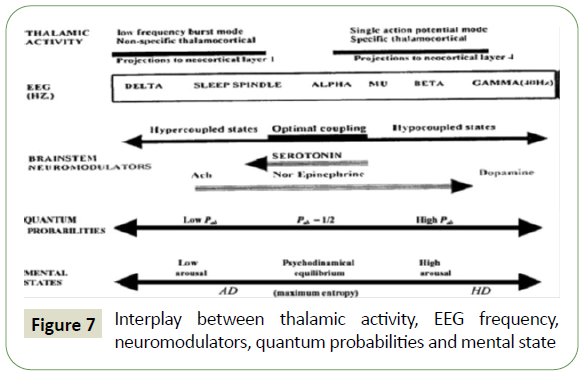
Figure 7: Interplay between thalamic activity, EEG frequency, neuromodulators, quantum probabilities and mental state
Conclusions
• The fundamental relevance of EEG spectra for mental activation (both general and focused) can be related to the interaction of electric field with neuronal quantum dipoles.
• There is a substantial distinction between the coarsegrained arousal (as background state of consciousness) and the fine-grained content of consciousness, whereby attention appears to be a bridge.
• However, deeper understanding of substrates and emergence of arousal, attention and consciousness must take into account the subtle interplay of neurophysical, neurochemical and neurobiological correlates.
• Brain-rate can be considered as an integral brain state attribute, correlated to its electric, mental and metabolic activity.
• In preliminary assessment, brain-rate may serve as an indicator of general mental arousal level, similar to heart-rate, blood pressure and temperature as standard indicators of general bodily activation
• Brain-rate can be considered as an integral brain state attribute, correlated to its electric, mental and metabolic activity.
• Brain-rate training is especially suitable to reveal the patterns of sensitivity/rigidity of EEG spectrum and its frequency bands, related to permeability of corresponding neuronal circuits. Based on this information, individually adapted NF protocols can be elaborated.
39083
References
- Damasio A (1999) The feeling of what happens: Body and emotion in the making of consciousness. Harcourt College Publishers.
- Popper KR, Eccles JC (1977) The Self and its Brain, Springer Verlag, Berlin
- Eccles JS, Jacobs JE (1986) Social Forces Shape Math Attitudes and Performance. Signs: Journal of Women in Culture and Society 11: 367-380.
- Levy BJ, Anderson MC. (2012) Purging of Memories from Conscious Awareness Tracked in the Human Brain. Journal of Neuroscience 32: 16785-16794;
- Kahneman D (1973) Attention and Effort. Englewood Cliffs, NJ: Prentice-Hall.
- Thacher RW, John ER (1977) Functional neuroscience: foundations of cognitive processing. Erlbaum, Hillsdale, NJ
- Bendorfer (2001) Alpha-theta neurofeedback: Its promises & challenges. BFE 5th Annual Meeting, Prien
- Hameroff SR (1994) Quantum coherence in microtubules: a neural basis for emergent consciousness. J Conscious Stud 1: 91–118.
- Hameroff SR (1997) Quantum computing in microtubules. An intraneural correlate of consciousness? Jap Bull Cognitive Sci 4: 67–92.
- Hameroff SR (1998) Quantum computation in brain microtubules? The Penrose–Hameroff ‘Orch OR’ model of consciousness. Phil Trans R Soc Lond A 356: 1869–1896.
- Romijn H (2002) Are virtual photons the elementary of consciousness? J Conscious Stud. 9: 61-81.
- Jibu M, Yasue K (1995) Quantum Brain Dynamics and Consciousness John Benjamins, Amsterdam
- Vitiello, Giuseppe (2001) My Double Unveiled: The Dissipative Quantum Model of the Brain (Advances in Consciousness Research, V. 32). Philadelphia, PA: John Benjamins North America Inc.
- Dimitrovski D, Pop-Jordanov J, Pop-Jordanova N, Solov’ev EA (2004) Hidden-crossing trnsitions between collective states of coupled quantum rotators as a possible mechanism of memory processing. Inf Sci 168: 267-276
- Pop-Jordanov J, Pop-Jordanova N (2011) Brain electric field and consciousness studies, Toward a Science of Consciousness, Stockholm, Sweden, 2011, Aula Magna Hall, Tucson, University of Arizona, Center for Consciousness Studies 90.
- Pop-Jordanov J, Pop-Jordanova N (2009) Neurophyical substrates of arousal and attention, Cognitive Processing 10: 1-9.
- Pop-Jordanov J. Pop-Jordanova N (2010) Quantum transition probabilities and the level of consciousness, Journal of Psychophysiology 24: 136-140.
- Pop-Jordanov J, Dimitrovski D, Pop-Jordanova N, Solov’ev EA (2004) Quantitative Quantum Approach to NeuronL Electric Acticity, ISNR, 2nd Annual Meeting 2004, Winterthur, Switzerland (ISNR-EU, 2004:22)
- Pop-Jordanov J, Pop-Jordanova N (2010) Quantum transition probabilities and the level of consciousness. Journal of Psychophysiology 24: 136–140.
- Pop-Jordanova N, Pop-Jordanov J (2005) Spectrum-weighted EEG frequency (“brain rate”) as a quantitative indicator of mental arousal. Prilozi 2: 35–42.
- Pop-Jordanova N (2011) Brain Rate as an Indicator of the Level of Consciousness. In: Cvetkovic D., Cosic I. (Eds) States of Consciousness. The Frontiers Collection. Springer, Berlin, Heidelberg.
- Kaniusas E, Varoneckas G, Alonderis A, Podlipsky A (2007) Heart rate variability and EEG during sleep using spectrum-weighted frequencies – A case study, COST B27. EU/ESF, Brussels.














